QuestionQUESTION: Hello,
2 weeks ago I could walk my 7 month old chow cross easily, and could take him to dog parks. He interacted well with other dogs, and was very obedient. Very suddenly, he has started to growl and bark at other dogs. It started as a behaviour that he only did while leashed, and has progressed to being when he is off leash as well. I thought that it was maybe a lack of exercise even though we go for a 30 minutes walk ever morning, and a 1 1/2 walk in the evening, and so i ran him using my rollerblades. After an hour of this I tried walking him again, and it had made no difference. When he begins to show interest in other dogs, I am quick to correct him, and if he escalates to growling, barking and lunging I am quick to put him in a fully submissive position. None of this appears to be making any difference and the recent walk we took in the dog park (silly me thinking the aggression was limited to on leash) seems to prove that the problem is actually getting worse. I should mention that he was a rescue, born outside, and rescued from a mauling by two other dogs. He was lovely and incredibly submissive (he used to submission pee whenever we approached him) when we first got him at 5 1/2 months, though now it appears that we have made him over confident. He has shown no aggression towards us or anyone in our home, and is still very friendly towards people. He is going to be fixed next Thursday. I guess my two questions are: 1) Will his neutering make a difference? 2) If it won't, what more can I do to control this behaviour? Thank you so much for your help!
ANSWER: YOU have created this aggression problem. STOP WHAT YOU'RE DOING.
On leash, a dog cannot leave a situation or present normal greeting postures to an approaching dog; this often creates a defense posture, especially in a temperamentally submissive dog. NOW, to make matters FAR WORSE, you have "corrected" him and THEN forced him into a posture of abject submission IN FRONT OF the other dog(s). This posture needs to be VOLUNTARY and is offered by a dog in the presence of those s/he perceives as much higher ranking, somehow threatening, or dominant.
You need to learn about dog training NOW and you need to STOP any sort of training you're doing. I suspect you have used coercion to "teach" this dog and that his "obedience" is not voluntary cooperation but AVOIDANCE behavior. "Controlling" this behavior is NOT what you need to do. You now have to rehabilitate this dog in the presence of other dogs AND you have to rehabilitate your relationship with him, because I have no doubt his trust in you has diminished (if not extinguished) and he is going to begin to become more avoidant of you and may even become aggressive as a defense.
If you can, find a POSITIVE REINFORCEMENT training venue in your area. Be certain the trainer is credentialed and heavily experienced and uses NO choker collars, remote collars, prong collars or any sort of correction. See if they have a "growl" class: this is a class where dogs with problem behaviors can be evaluated and interact with other dogs; if they do not, see if they have a play group or a novice obedience class. Your dog has to relearn how to interact with other dogs and he needs to be observed by someone who knows what they're seeing. I'm convinced this is a fear aggression problem and I absolutely KNOW you've made it worse. When another dog approaches (or children, or people in wheelchairs, anything that frightens a dog on leash), one must observe one's dog carefully (by reading body language) and BEFORE the fight/flight reaction kicks in (when dog is offering calming signals or hackles begin to raise), one goes in the opposite direction with a "come along" signal or a slap of one's side, for a few steps, then circles left, then right (changes brain wave patterns and interrupts emotional reaction), then ask for "sit" (trained with positive reinforcement), reward with treat/praise, and go forward again. In this manner, the dog learns that approaching objects are rewarding, re-learns how to interact with them and to "work" while doing so, and acquires trust that its human (at the other end of the leash) is in charge and that the dog itself is "safe".
For information on how to teach your dog (TEACH) using positive reinforcement, go to Dr. Ian Dunbar's Video Training Textbook site:
http://www.youtube.com/watch?v=Hv38ornzzuQ
He also has a video for purchase which addresses dog to dog aggression:
http://www.dogwise.com/ItemDetails.cfm?ID=DTB593
and a book that deals with dog behavior, "Dog Behavior: An Owner's Guide to a Happy, Healthy Pet."
Of course you must neuter this dog. When he is brought home from surgery, START OVER. Throw out choker collars, stop "correcting" him, do nothing dominant, begin your new training regimen and look for a training venue as described above. Be certain to fully explain to the trainer the problem at hand and how it was exacerbated by intervention so s/he has a full understanding of what has occurred. Also, learn how to read dog body language, your dog has no doubt been offering all sorts of calming signals you've missed (not everyone talks "dog"!) by reading Turid Rugaas book, "On TAlking Terms with Dogs: Calming Signals" or going to her website:
http://www.canis.no/rugaas/index.php
---------- FOLLOW-UP ----------
QUESTION: I just want to clarify. When i say correct i mean to hold the leash tightly, say the word no and prevent him from lunging toward the other dog. I do not use a choke collar, and I am in the process of taking a positive reinforcement class where we use the clicker and rewards. I have tried the redirection method that we use in class in this situation, but he ignores the reward (even if it is home made liver treats) and continues to fixate on the other dog) and I have called in a trainer, and am hoping that this will make a difference, but in the mean time, what do I do when my dog is barking aggressively, and lunging at other dogs?
AnswerBecause your dog ignores good treats (most dogs will not accept treats when highly stressed) he is most likely developing a fear response and the fight/flight mechanism has kicked in: he can't "flee", he's on a leash, so he stands to protect himself and presents a "large" posture. Often, owners misinterpret the onset of this behavior and react emotionally, thereby aggravating the situation since the dog knows the owner is now emotionally upset, unable to manage the situation, and the dog immediately connects this with the approaching "problem", be it child, other dog, car, etc. Since you force your dog into rollover, you HAVE heavily contributed to this. As I EXPLAINED: going belly up is a voluntary behavior one dog offers another (sometimes to humans as well) as a clear signal of total submission: no dog is forced into this posture; if you observe two dogs fighting (where play suddenly erupts into a real struggle), you may see one go belly up, the other will stand there for a second or more and then leave. By forcing a dog into submissive posture in the face of an approaching problem (to him), you put him into a situation socially which he would not otherwise have chosen and create a serious avoidance problem in his mind.
If you're having problems controlling the dog because he is stronger than you are, you must use a head collar; I don't know if this IS part of the problem, you'll have to use a followup question to inform me. If not, then all you need to do is develop a come along signal: on normal walks (when nothing is threatening the dog and he's calm), pat your side, say "come along" and go reverse direction. As the dog turns to go with you, pop a treat in his mouth and repeat "come along", then keep going a few feet, and repeat BACK in the original direction, with signal and reward. Do this often enough (several times a walk) over the course of about a week, and your dog will form a strong association between the "come along", his following behavior, and the treat. This is where you must closely observe the dog when other dogs approach and use the method I described in my original answer: reverse direction with 'come along', circle left, circle right (to change brain wave patterns and interrupt emotional response), ask for "sit", click/treat, proceed forward. Once dog has begun to acknowledge the 'come along' in situations where another dog is approaching, observe him closely and click/treat his calming signals: this is why you need to go to Turid's website, so you can recognize those signals. Click/treat a calming signal rewards the dog's THOUGHT patterns which are, when offering calming signals, non-confrontational and communicative to the other dog. You can then ask your dog for 'sit' with click/jackpot. A group class in basic obedience will help your dog to "work" among other dogs ALL on leash. Never respond with anxiety when your dog growls at the approach of another dog: take tic tacs with you, pop one in your mouth to mask the adrenaline (which the dog can smell), remain calm, change direction etc. as described. I gave you multiple, excellent sources for information in my first answer, all designed to assist you in understanding the method of positive reinforcement. For expert information regarding this, go to ClickerTraining.com. This is karen Pryor's site, she is the world's foremost authority on the clicker. She also has a book, "Getting Started: Clicker Training for Dogs" and a web site that explains the science behind the technique, http://reachingtheanimalmind.com/ MANY clicker trainers do not use the clicker properly or condition the dog properly. Clicking at the wrong moment rewards the WRONG behavior/motive/emotion/thought process and many people do this. Regardless of who your trainer is, learn about the clicker at the source of the woman who introduced it to dog training, that's Karen.

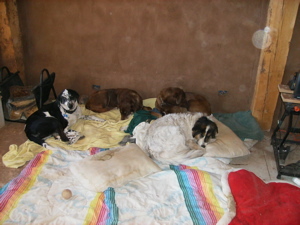 Sudden aggression within pack after a death
Question
Sudden aggression in o
We have an approximatel
Sudden aggression within pack after a death
Question
Sudden aggression in o
We have an approximatel
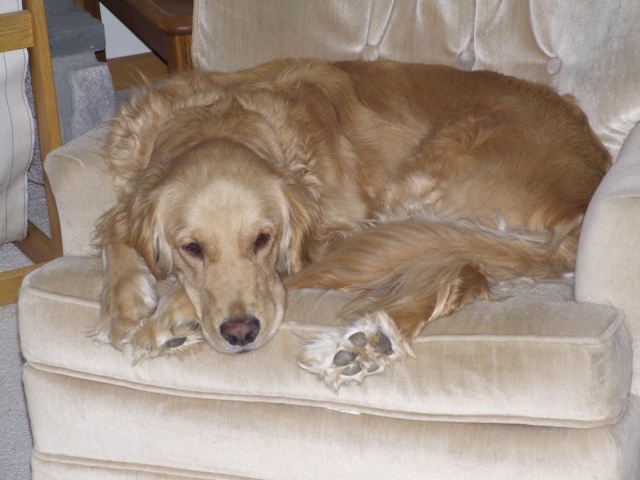 aggression in aging dog
Question
Niko
I have a thirteen year old, female, Samoy
aggression in aging dog
Question
Niko
I have a thirteen year old, female, Samoy
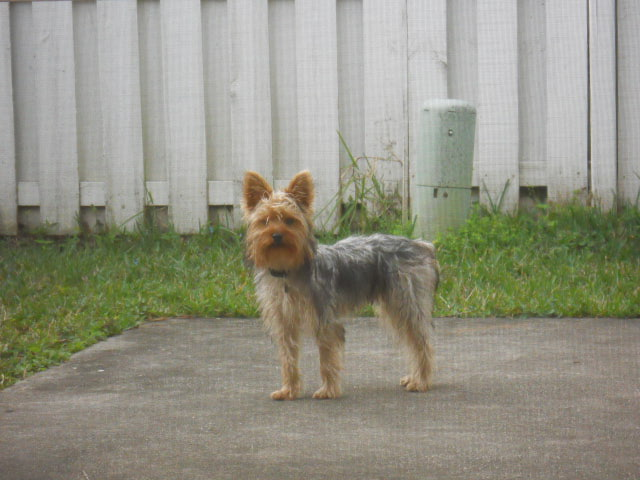 agressive silky terrier
Question
Lucas 1 year old
Hi Jennifer:
I have a
agressive silky terrier
Question
Lucas 1 year old
Hi Jennifer:
I have a
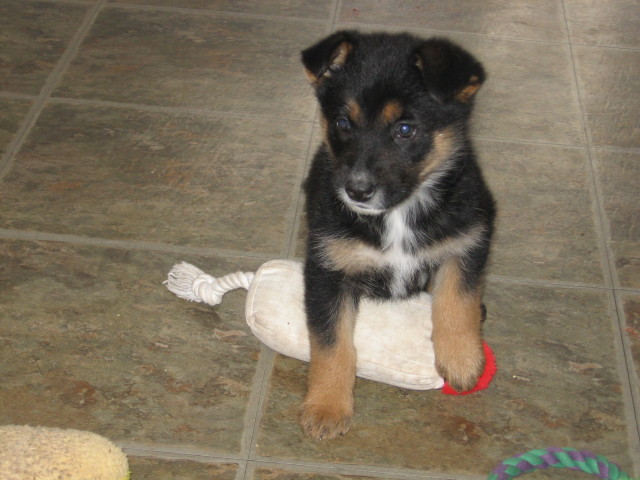 puppy problems
QuestionQUESTION: I am the proud owner of 2 german shep
puppy problems
QuestionQUESTION: I am the proud owner of 2 german shep
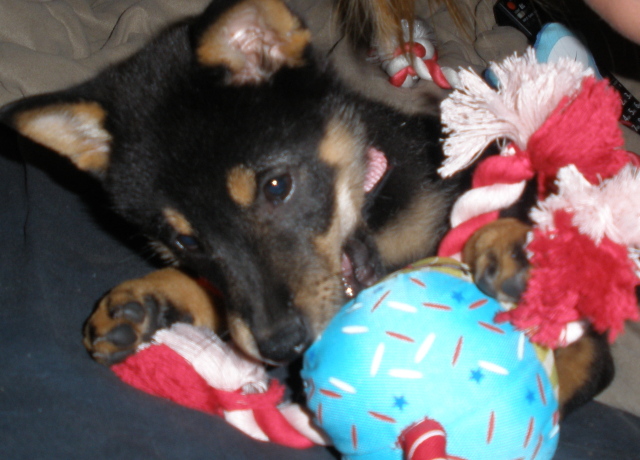 My Shiba Inu
Question
Lola
I bought a registered Shiba Inu puppy fro
My Shiba Inu
Question
Lola
I bought a registered Shiba Inu puppy fro